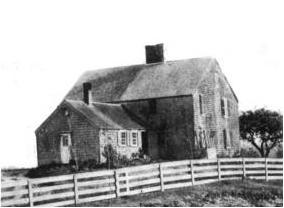|
Pine Street Pond
Pine Street Pond is a pond in Duxbury, Massachusetts Duxbury (alternative older spelling: "Duxborough") is a historic seaside town in Plymouth County, Massachusetts, Plymouth County, Massachusetts, United States. A suburb located on the South Shore (Massachusetts), South Shore approximately to t .... The pond is located southeast of Lower Chandler Pond and northeast of Reeds Millpond. The water quality is impaired due to non-native aquatic plants in the pond. The pond is hydrologically associated with a cranberry bog operation located to the west of the pond. An unnamed brook heading west through the cranberry bog and ultimately leading to Pine Brook is the outflow of the pond. External linksEnvironmental Protection Agency [...More Info...] [...Related Items...] OR: [Wikipedia] [Google] [Baidu] |
Duxbury, Massachusetts
Duxbury (alternative older spelling: "Duxborough") is a historic seaside town in Plymouth County, Massachusetts, United States. A suburb located on the South Shore approximately to the southeast of Boston, the population was 16,090 at the 2020 census. Geographic and demographic information on the specific parts of the town of Duxbury is available in the articles Duxbury (CDP), Green Harbor, and South Duxbury. History The area now known as Duxbury was inhabited by people as early as 12,000 to 9,000 BCE. By the time European settlers arrived here, the region was inhabited by the Wampanoags, who called this place Mattakeesett, meaning "place of many fish."''Duxbury in Brief: A Historical Sketch'' , duxburyhistory.org; accessed May 24, 2017. In 1620, |
Lower Chandler Pond
Lower Chandler Pond is a pond in Duxbury and Pembroke, Massachusetts. The pond is located north of Reeds Millpond and south of Upper Chandler Pond. Pine Brook, a tributary of the Jones River The Jones River is a U.S. Geological Survey. National Hydrography Dataset high-resolution flowline dataThe National Map , accessed April 1, 2011 river running through Kingston, Massachusetts. The river drains about , has its source in Silver Lak ..., flows through the pond. The water quality has been impaired by non-native aquatic plants and non-native fish in the pond. External linksEnvironmental Protection Agency Ponds of Plymouth ... [...More Info...] [...Related Items...] OR: [Wikipedia] [Google] [Baidu] |
Reeds Millpond
Reeds Millpond is a pond in Kingston, Massachusetts. The pond is located on Route 27 Route 27, or Highway 27, may refer to: Australia * Burke Developmental Road (Queensland) * Zeehan Highway (Tasmania) Canada * Alberta Highway 27 * British Columbia Highway 27 * Manitoba Highway 27 * Prince Edward Island Route 27 * Saskatchew ... northwest of the intersection with Winter Street and Reed Street, north of Pembroke Street South Pond, south of Lower Chandler Pond and southwest of Pine Street Pond. Pine Brook, a tributary of the Jones River, flows through the pond. The water quality is impaired due to non-native aquatic plants and non-native fish in the pond. External linksEnvironmental Protection Agency [...More Info...] [...Related Items...] OR: [Wikipedia] [Google] [Baidu] |
Ponds Of Plymouth County, Massachusetts
A pond is an area filled with water, either natural or artificial, that is smaller than a lake. Defining them to be less than in area, less than deep, and with less than 30% emergent vegetation helps in distinguishing their ecology from that of lakes and wetlands.Clegg, J. (1986). Observer's Book of Pond Life. Frederick Warne, London Ponds can be created by a wide variety of natural processes (e.g. on floodplains as cutoff river channels, by glacial processes, by peatland formation, in coastal dune systems, by beavers), or they can simply be isolated depressions (such as a kettle hole, vernal pool, prairie pothole, or simply natural undulations in undrained land) filled by runoff, groundwater, or precipitation, or all three of these. They can be further divided into four zones: vegetation zone, open water, bottom mud and surface film. The size and depth of ponds often varies greatly with the time of year; many ponds are produced by spring flooding from rivers. Ponds m ... [...More Info...] [...Related Items...] OR: [Wikipedia] [Google] [Baidu] |

